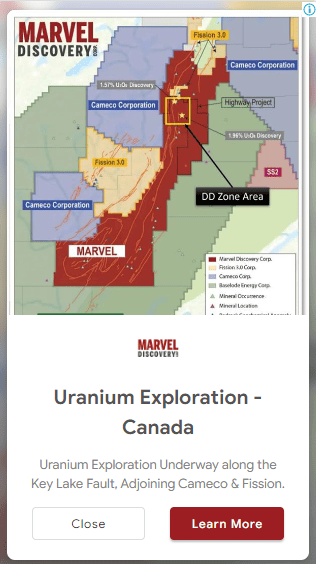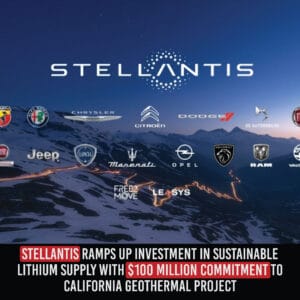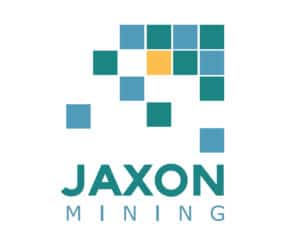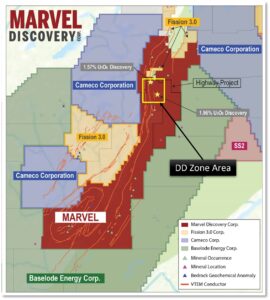2023-01-19 04:41:40
TORONTO, Jan. 19, 2023 /CNW/ – Millennial Precious Metals Corp. (TSXV: MPM) (OTCQB: MLPMF) (“Millennial” or the “Company”) is pleased to announce positive metallurgical results from ongoing studies designed to determine the processing characteristics of the Mountain View project located in Nevada, USA. Material for the bottle roll tests was collected during the Phase 1 drill program at Mountain View, consisting of 27 holes totaling ~7,200m. Bottle roll recoveries from various crush sizes sampled (1.7mm and 75µm) returned excellent results, indicating that the material will support heap leach processing.
Highlights:
Bottle roll tests for Mountain View returned average gold recoveries of ~89% within the oxide material, with several samples returning gold recoveries of up to ~95%.
- A total of 42 samples were selected from oxide, mixed, and fresh material collected from Phase 1 drilling for bottle roll testing (refer to Table 1 and Figure 1 for detailed test results).
- Average gold recoveries for oxide material range from 88.8% (1.7mm) to 94.9% (75µm).
- Based on the latest design, the proposed pit at Mountain View is comprised of ~80% to ~90% oxide material.
- Samples were taken across all rock types and a wide grade distribution.
- Recoveries do not appear to be sensitive to size fraction and/or grade.
- Column testing is currently underway to support the bottle rolls, with final results expected in the coming weeks.
- Testing indicates low cyanide consumption and lime requirements.
- Final metallurgical results from Mountain View are expected in Q1 2023 to support the updated mineral resource estimate and Preliminary Economic Assessment (PEA).
Jason Kosec, President, CEO & Director of Millennial stated, “We are extremely pleased with the initial metallurgical results from Mountain View. Gold recoveries of up to ~95% within the oxide material are significantly higher than the Nevada average of ~70%. Not only are the initial recoveries very encouraging, but the amount of reagent consumption appears to be low, which will be positive for future operating costs. Further metallurgical testing is underway on material from both Mountain View and Wildcat, which will support the updated mineral resource and PEA expected later this year.”
Metallurgical Results Overview
In 2022, Millennial initiated a metallurgical heap leach test program consisting of bottle roll and column testing. The metallurgical test program was designed and overseen by Micon International Limited, working closely with the Millennial team. All metallurgical test work is being performed by McClelland Laboratories Inc. in Sparks, Nevada.
Historically, limited metallurgical testing has been done at Mountain View. Millennial’s metallurgical program is significantly more exhaustive than any previously completed testing and is focused on supporting the upcoming PEA and future Preliminary Feasibility Study (“PFS”) to de-risk the project.
Material for metallurgical testing was gathered during the Phase 1 drill program at Mountain View, which consisted of 27 holes totaling ~7,200m with the objective of resource conversion, collecting geotechnical and metallurgical data, validating grade continuity, and extending the mineralization laterally to increase the pit size. A total of 42 samples from coarse rejects were selected for bottle roll tests (also referred to as variability samples). The samples represent oxide, transition, and fresh (sulphide) material, covering all lithologies types and a wide variety of grades, ranging from 0.16 g/t Au to 9.20 g/t Au.
Bottle roll tests were undertaken at two crush sizes (80% passing 1.7mm and 75µm) and leached for 96 hours. The bottle rolls are an excellent indicator of potential column test results which will be used for the upcoming PEA.
Oxide samples returned average recoveries of 88.8% at 1.7mm with recoveries ranging from 70.5% to 98.1% (refer to Table 1 and Figure 1 for detailed test results). Based on the latest design, the proposed pit at Mountain View is comprised of ~80% to ~90% oxide material. Mixed samples (representing the transition zone containing both oxide and sulphide material) averaged 55.4% recovery at 1.7mm.
No correlation was observed between gold grade and recoveries, which is expected to be positive in a heap leaching scenario. A clear correlation exists between recoveries and sulphur content – the greater the oxidation level, the higher the recovery, which is generally consistent with most low sulphidation epithermal deposits.
As part of the ongoing metallurgical test work for Mountain View, four column tests at two crush sizes (80% 19mm and 9.5mm) are still in progress. Preliminary results from the column tests are consistent with the bottle rolls and final results are expected in the coming weeks. Column test recovery rates are moderate with the majority of gold extraction being completed within 24 hours of leaching. This is a good indicator of a short leach pad cycle time. Cyanide consumption (<0.10 kg/mt ore) and lime requirements (1.4 kg/mt or less) were observed to be low, which is expected to have a positive impact on mining operating costs.
In addition to the bottle rolls, Crusher Work Index testing was performed on material from Mountain View. Overall, the material is classified as “very soft”, with average results of ~6.0kW-hr/ton. This is a favourable characteristic for heap leaching as the rock is expected to require less power consumption and operating costs for crushing.


Mountain View Project Overview
Mountain View is located within the Deephole mining district in Nevada, 24km north of the town of Gerlach within Washoe County. The project area is covered by a 5,476-acre land package consisting of 282 unpatented claims, located on federally owned lands administered by the BLM. Gold-dominated mineralization at Mountain View consists of low sulphidation epithermal veins and disseminated oxide and sulphide mineralization hosted in Cenozoic volcanic rocks. Mountain View has an Inferred mineral resource estimate containing 427,000 ounces of Au (oxide) (23.2 million tonnes at 0.57 g/t Au; effective date of November 15, 2020). A technical report for the Mountain View Project is available on Millennial’s issuer profile on SEDAR at www.sedar.com.
ABOUT MILLENNIAL PRECIOUS METALS CORP.
Millennial Precious Metals (TSXV:MPM, OTCQB:MLPMF) is an exploration and development company focused on unlocking quality ounces through the responsible expansion of its eight gold and silver projects located in Nevada and Arizona, USA. The Company plans to accelerate the development of its two flagship projects located in Nevada: Wildcat and Mountain View. The Wildcat Inferred Mineral Resource estimate contains 776,000 ounces of oxide Au (60.8 million tonnes at 0.40 g/t Au; effective date of November 18, 2020) and the Mountain View Inferred Mineral Resource estimate contains 427,000 ounces of oxide Au (23.2 million tonnes at 0.57 g/t Au; effective date of November 15, 2020). Technical reports titled “NI 43-101 Technical Report Resource Estimate for the Wildcat Project, Pershing County, Nevada, United States“, dated November 20, 2020 with an effective date of November 18, 2020 prepared by William J. Lewis, B.Sc., P.Geo., Rodrigo Calles-Montijo, MSc., CPG, and Leonardo de Souza, MAusIMM (CP) and “NI 43-101 Technical Report for the Mountain View Project, Washoe Country, Nevada, USA“, dated November 25, 2020 with an effective date of November 15, 2020, prepared by William J. Lewis, B.Sc., P.Geo., Rodrigo Calles-Montijo, MSc., CPG, and Leonardo de Souza, MAusIMM (CP) are available on Millennial’s issuer profile on SEDAR at www.sedar.com.
Millennial Precious Metals is led by an experienced management team and board of directors with a proven track record of success in financing and developing high-quality mining projects. The Company is well positioned to create value for all stakeholders by applying a systematic strategy to advance and de-risk all eight projects over the next few years.
Corporate Website: https://millennialpreciousmetals.com/
QUALIFIED PERSON
The information in this news release was reviewed and approved by Raphael Dutaut, Ph.D., P.Geo., Vice President, Exploration for Millennial Precious Metals Corp. Mr. Dutaut is a QP as defined by NI 43-101.
SAMPLE PREPARATION AND QAQC
All samples were prepared and analyzed at the McClelland laboratory, Reno, Nevada. Each of the column testing composites was stage-crushed to 80%-19mm (100%-25mm). The 19mm material was thoroughly blended by repeated coning, and quartered to obtain 75kg for a column leach test, 20kg for a head screen analysis, 8kg for a Bond abrasion index determination, and 85kg for finer crushing. The 85 kg splits were stage-crushed to 80%-9.5mm (100%-12.5mm). The 9.5mm material was blended and split to obtain 35kg for a column leach test, 8kg for a head screen analysis, 3kg for a bottle roll test, triplicate 3kg splits for head analysis, and 18kg for finer crushing. The 18kg splits were crushed to 100%-1.7mm. This material was blended and split (using a rotary-type splitter) into 1kg lots for ball milling.
The variability samples were each blended and split using a rotary type splitter to obtain 1kg for bottle roll testing, triplicate 0.25kg splits for head analysis, and 1 kg for further crushing. These 1 kg splits were crushed to 100%-1.7mm in preparation for ball milling. Assay pulps were prepared from each of the head analysis splits (column testing composites and variability samples). Each pulp was analyzed by conventional fire assay fusion procedures to determine gold content. Silver content was determined by fire assay or by a four acid digestion procedure with ICP finish. A single assay pulp from each sample was also subjected to carbon and sulfur speciation analyses by using a Leco/pyrolysis method, an ICP metals analysis, and a “classical whole rock” analysis. The ICP scan and whole rock analysis were sent to The Mineral Laboratory for bulk and clay-size XRD analysis. Leaching was conducted by rolling the slurries in bottles on laboratory rolls for 72 hours (75μm feeds) or 96 hours (9.5mm and as-received feeds). Timers were used for the 9.5mm tests to roll the bottles for 1 minute per hour, in order to minimize autogenous grinding. All other tests were rolled continuously. Rolling was suspended briefly after 2, 6, 24, 48, and 72 hours and slurry samples were taken and filtered to collect pregnant solution for gold and silver analysis by ICP methods. Filter cakes were returned to the leaching vessels. Pregnant solution volumes were measured. Make-up water, equivalent to that withdrawn, was added to the slurries. Hydrated lime was added, as required, to maintain a slurry pH of 10.8 to 11.2. Sodium cyanide was added to maintain the initial concentration. Rolling was then resumed. After 72 or 96 hours, the slurries were settled to separate liquids and solids. Final pregnant solution volumes were measured and sampled for gold and silver analysis. Final pH and cyanide concentrations were determined. Leached residues were washed, dried, weighed, and then assayed in triplicate to determine residual precious metal content.
CAUTION REGARDING FORWARD LOOKING STATEMENTS
Certain statements in this news release are forward-looking statements, which reflect the expectations of management regarding the business development objectives and plans of Millennial.
Forward-looking information contained in this news release are based on certain factors and assumptions. While Millennial considers these assumptions to be reasonable based on information currently available to it, they may prove to be incorrect. Forward looking information involves known and unknown risks, uncertainties and other factors which may cause the actual results, performance or achievements to be materially different from any future results, performance or achievements expressed or implied by the forward-looking information. Such factors include risks inherent in the exploration and development of mineral deposits, including risks relating to changes in project parameters as plans continue to be redefined, risks relating to variations in grade or recovery rates, risks relating to changes in mineral prices and the worldwide demand for and supply of minerals, risks related to increased competition and current global financial conditions, access and supply risks, reliance on key personnel, operational risks, regulatory risks, including risks relating to the acquisition of the necessary licenses and permits, financing, capitalization and liquidity risks, title and environmental risks and risks relating to health pandemics and the outbreak of communicable diseases, such as the current outbreak of the novel coronavirus, COVID-19.
Further, these forward-looking statements reflect management’s current views and are based on certain expectations, estimates and assumptions which may prove to be incorrect. A number of risks and uncertainties could cause the Company’s actual results to differ materially from those expressed or implied by the forward-looking statements, including: (1) a downturn in general economic conditions in North America and internationally, (2) the inherent uncertainties and speculative nature associated with mineral exploration, (3) a decreased demand for precious metals, (4) any number of events or causes which may delay exploration and development of the property interests, such as environmental liabilities, weather, mechanical failures, safety concerns and labour problems, (5) the risk that the Company does not execute its business plan, (6) inability to finance operations and growth, (7) inability to obtain all necessary permitting and financing, and (8) other factors beyond the Company’s control. These forward-looking statements are made as of the date of this news release and Millennial does not assume an obligation to update these forward looking statements, or to update the reasons why actual results differed from those projected in the forward-looking statements, except in accordance with applicable securities laws.
Neither the TSX Venture Exchange nor its Regulation Services Provider, as that term is defined in the policies of the TSX Venture Exchange, accepts responsibility for the adequacy or accuracy of this release.










